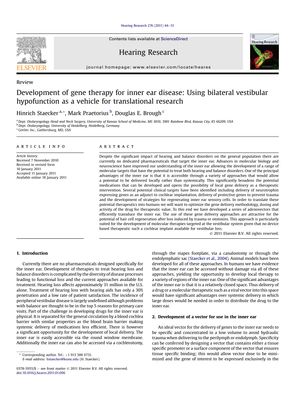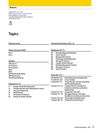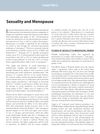Development of Gene Therapy for Inner Ear Disease: Using Bilateral Vestibular Hypofunction as a Vehicle for Translational Research
January 2011
in “
Hearing Research
”

TLDR Gene therapy, especially using atoh1, shows promise for creating functional sensory hair cells in the inner ear, but dosing and side effects need to be managed for clinical application.
The document from 2011 explores the potential of gene therapy for treating inner ear diseases, with a focus on bilateral vestibular hypofunction (BVH) as a model for translational research. It highlights the lack of specific pharmaceuticals for inner ear conditions and the advantages of local therapy delivery due to the blood cochlea barrier. The review discusses the use of adenovectors and adeno-associated virus (AAV) vectors for gene transduction and long-term gene expression in the inner ear, which could lead to hair cell regeneration and treatment of genetic deficits. It emphasizes the importance of molecular diagnosis for targeted therapies and the potential of molecular strategies for hair cell regeneration by altering cell cycle control or overexpressing genes that control hair cell genesis. The document also details studies on the role of the gene atoh1 in hair cell regeneration, showing that its expression or inhibition of the notch signaling pathway can lead to new hair cells from supporting cells. Experiments in guinea pigs and mice have shown promising results, with significant recovery of vestibular hair cells and improved balance. Additionally, the document reports on a study where adult mice demonstrated significant hair cell regeneration and innervation after treatment with an Ad5 vector expressing atoh1 driven by the GFAP promoter, following hair cell ablation with neomycin. The conclusion underscores the promise of gene therapy, particularly atoh1 transfection, for producing functional sensory hair cells and the necessity of addressing dosing and side effects for clinical use.




